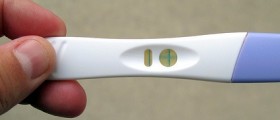Birth control pills are a very effective contraceptive method in women and they are, therefore, widely used. However, before starting to use any specific contraceptive pill, a doctor should be consulted because it is not so simple to choose the right pills. This type of pills can interact with certain other medicines and they also may have several negative effects on the health of a woman.
When a woman decides to use birth control pills as a preventive measure from conceiving the pregnancy for the first time, she should be well informed about the working of the pills, about their adverse effects and how they should be used in order to be effective.
- If the pill is used as directed, only three out of 1,000 women will become pregnant in the first year of use. About nine out of 100 less consistent users will become pregnant in the first year of use.
- In early 2010, a study of 46,112 women in the U.K. who were observed for up to 39 years showed that using the pill did not, overall, increase a woman’s risk of mortality. It showed, in fact, that pill use among these women may have increased longevity.
- It was just five years after the pill was approved for use as a contraceptive in 1960 that birth control became legal nationwide in the U.S. That is why the impact of the pill on the health and lives of women and their families will be forever intertwined with the 1965 U.S. Supreme Court decision in Griswold v. Connecticut, which protected the constitutional right of married couples in this country to use birth control.
- In 1965, there were 31.6 maternal deaths per 100,000 live births. By 2007, the rate had been reduced by 60 percent, to 12.7 maternal deaths per 100,000 live births.
- In 1965, 24.7 infants under one year of age died per 1,000 live births. Preliminary data for 2011 shows that this figure had declined to 6.05 infant deaths per 1,000 live births, a 76 percent decrease.
- In 1965, 26.2 million women participated in the U.S. labor force; by 2014, the number had risen to 73 million.
- The labor force participation rate of married women nearly doubled between 1960 and 2013 - from 31.9 to 58.9 percent.
- By 2012, 29 percent of women in dualincome families earned more than their husbands.
- In 1960, women represented three percent of the lawyer population. By 2014, women represented 33 percent of all lawyers.
- Between 1960 and 2013 the percentage of women who had completed four or more years of college increased sixfold - from 5.8 percent to 37 percent.
How Does a Contraceptive Pill Work?
We know that every month the women ovulate when the mature eggs are let free from the ovaries. The egg goes to the fallopian tube and waits a sperm as to be fertilized. Ovulation in women with normal menstrual cycle occurs on the fourteenth day of the menstrual cycle. In this time, the women are most fertile.
Contraceptive pills contain synthetic hormones which prevent the ovaries to produce and release the eggs so that there is noting to be fertilized and the woman cannot stay pregnant. But the working of the contraceptive pills does not stop here. If the pill’s hormones did not work properly in preventing the formation and release of the eggs, and if an egg was fertilized after all, the pill then works on the cervix and wall of the uterus. The hormones of the pill make the cervix thicker than before, while the endometrium becomes thinner due to these hormones. In such state of cervix and endometrium, the egg cannot be implanted normally, and early abortion occurs.
Using the Contraceptive Pill For the First Time
When a woman begins to take this way of protection from unwanted pregnancy, she should also use certain additional contraceptive methods until her body gets used to the contraceptive pill.
It is recommended to take the first birth control pill on the first day of menstruation on the first Sunday after the menstruation. Everyday just one pill should be taken, and it is advisable to take it always at the same time of the day. While some packs of contraceptive pills have only 21 active pills, there are also those that contain 28 pills. These packs of 28 pills consist of 21 active pills and 7 inactive pills. The women will soon discover that they get their menstruation when they are on these inactive pills.











_f_280x120.jpg)





Your thoughts on this
Loading...